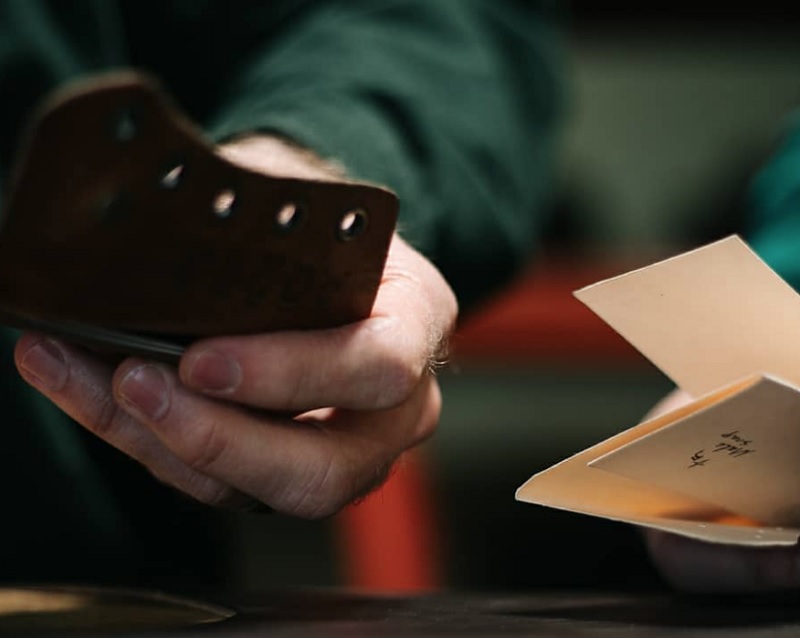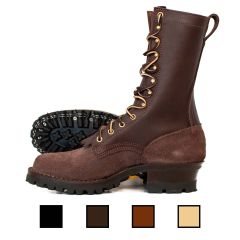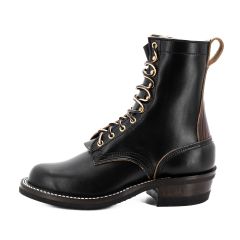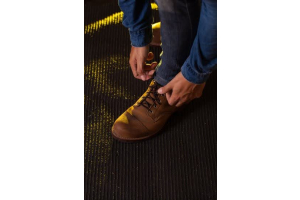How Do I Know My Boot Size? Three Ways To Tell

Believe it or not, not everyone knows what their boot size or shoe size actually is. How do I know my boot size? You have to start with some measurements…
However, that's only half of the story! The real question is "how do I know my boot size for Brand X boots or shoes?" And that, as it turns out, can actually be a little more complicated. We'll cover that, too.
So, how do you learn what your boot size is? Here are three ways to find out.
How Do I Know My Boot Size? Start With This Simple Measurement
You can take a simple measurement to get your rough boot size and/or shoe size. This is the rather quick and dirty method and isn't necessarily the most precise...but gets you more than close enough in many cases.
You should probably get a more precise measurement for working footwear, however. A proper fit will ensure best results with work boots. However, more on that in a second.
To find out, you will need:
- Paper
- A pen or a pencil
- Cloth measuring tape or twine and a rigid measuring tape
- Socks you normally wear
It's also a good idea to have someone help you, but not strictly speaking the most necessary.
So, what you'll do is put on the socks you normally wear or will wear with the footwear you have in mind. Boot socks for work boots, dress socks or casual socks for shoes or casual boots.
Put your foot on the piece of paper, taking care that your heel and your forefoot (that's everything forward of the arch of the foot) are all on the paper. Now stand up.
Trace your heel, forefoot and toes with the pen or pencil. Find the longest point from the heel to the toes and measure it. For some people, it's the big toe, for some it's the index toe, but measure this distance in a straight line.
Next, find the widest part of your foot. Wrap the measuring tape or string all the way around your foot at the widest part (typically the bunion joint) and measure the circumference.
Do this for both feet, as there may be some variation in foot size.
Typically, the length plus 1 inch is generally your boot size with most manufacturers. Width...well, we're going to get to that.
Use A Brannock Device
A Brannock device is basically a caliper for measuring feet. It was developed by Charles Brannock, who actually got the idea while a student at college and built a prototype with an Erector set of all things.
Chances are you've used one; you just didn't know that's what the name was! It's in most shoe stores, so you've almost certainly used one at some point.
The Brannock device has two heel cups, one marked for the right foot and one for the left foot. You lay it flat on the floor, or at an angle if there's a stool for using the Brannock. Snug the correct heel into the heel cup and put your weight on the foot.
Move the arch slider to the first knuckle of the big toe, and move the width slider until it snugs up against your foot without pressure.
The Brannock device will give you shoe size length, arch length, and width expressed in the shoe size according to the Brannock size charts for men and women...and more on that later.
The numbers would look like size 11 ½ length, 11-½ arch, and 11-½ D width for a hypothetical person.
Then repeat the process for the other foot.
Just like the top method, using a Brannock device is not the most precise system of measurement but will certainly be close enough for most people in most circumstances...though not always.
Have Your Feet Professionally Measured For A Fitting

For precise sizing, you need a precise fitting and therefore a complete measurement of your feet.
This is done for bespoke handmade boots and shoes, just as it's done for tailored suits and shirts. The shoemaker or bootmaker will measure your feet, starting usually with a Brannock device and then adding various dimensions as needed.
Typically, the circumference of the feet will also be measured at various points to give the bootmaker a complete picture of the shape and size of your feet.
From there, the boots or shoes are made to your exact measurements.
Now, you can stop into various specialty stores to get your feet measured if so desired, or you can consult with a bootmaker or shoemaker on how to measure your feet for a bespoke pair of boots or shoes.
This is how you get precise measurements for a precise fit, just like - again - getting a tailor to take your measurements for a suit.
But...the thing is that it isn't always that simple.
Huh?
Those things we were going to go over later? Now we're going to talk about them.
Not Every Boot Size Is The Same For Every Brand

Something you need to know is that not every boot size is the same from every brand. Some bootmakers will offer, say, an 11E that's actually more like a 10D, some offer an 11E that really is an 11E and some offer an 11E that's an 12EE according to most size charts.
WHAT?!
Okay, so how shoes and boots are made is that the upper materials are assembled around a vaguely foot-shaped mold called a "last."
The thing about lasts is that every shoe company uses different ones, and the fit of particular brands or even specific models of footwear within a particular brand may be different.
What your length and width is according to most shoe size charts isn't necessarily the same designated size among all shoe or boot makers. Some use Brannock's charts, and some don't.
For instance, Allen Edmonds - the American dress shoe maker - has more than a dozen lasts, each for different types of shoes. Boots will have a wider toe box, and dress shoes will be narrower for that sharp modern toe.
If your shoe size according to a Brannock measurement is 11.5E...you might wear an 11.5E in one model of Allen Edmonds and an 11EE in others. You might be a 10.5E in Redwing boots, and you might have to get size 13 Adidas or Nike sneakers because their shoes are ridiculously narrow.
Why is that important? It's one thing to know what your boot size is...but just because you know it doesn't mean you know what your boot size is for every make and model of boot that's out there.







Validate your login